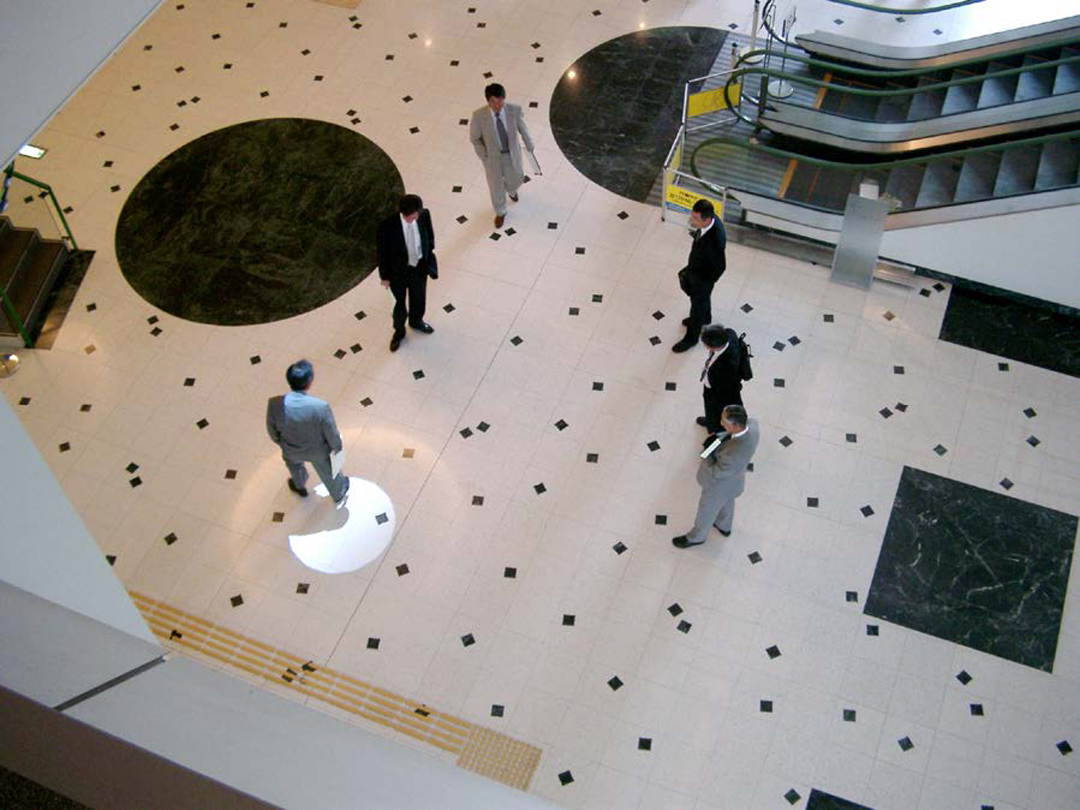“ACCESS” by Sester
Conference:
Experience Type(s):
E-Tech Type(s):
Entry Number: 02
Title:
- ACCESS
Organizer(s)/Presenter(s):
Description:
Abstract
ACCESS is a public art installation that applies web and surveillance technologies, allowing web users to track individuals in public spaces with a unique robotic spotlight and acoustic beam system, without people wearing any gear, exploring the ambiguities among surveillance, control, visibility and celebrity.
Description
ACCESS utilizes computer vision, robotics, sound, lighting and the Internet. A web site displays a real-time video of the public space installation. Through this interface, a web-user can select a person in the real world (in the public space). This action triggers specially designed computer vision technology to move a robotic spotlight and an acoustic beam system to pursue the person, not wearing any marker, in the public space. This is the first system of this kind. Since ACCESS requires real time interaction via the web, ACCESS has also innovated in the areas of low latency streaming video and control.
ACCESS addresses and explores the impact of detection and surveillance within contemporary society. It presents control tools that combine surveillance technology with the advertising and Hollywood industries, creating an intentionally ambiguous situation, revealing the obsession-fascination for control, vigilance, visibility and celebrity: scary or fun.
ACCESS was primarily influenced by the beauty of the surveillance representations (x-rayed bodies, luggage or vehicles, 3D laser scans, satellite reconnaissance imagery, etc.), the invisibility of the collected data, the power generated by means of surveillance practices, and the fascination certain people have for being “in the spotlight” (the TV shows such as Big Brother, websites such as JenniCam, etc.,).
Beware. Some individuals may not like being under surveillance. Beware. Some individuals may love the attention.
The computer vision control of a robotic spotlight and acoustic beam is the primary technical challenge. Although robotic spotlights have existed for years, they are all “dumb.” The autotracking robotic spotlight developed for ACCESS is unique. ACCESS relies on real time video analysis, and extends motion tracking algorithms designed for computer vision (Intel’s Computer Vision Libraries, OpenCV) to the public art sphere.
In addition the video tracking application uses a combination of custom video processing code and Microsoft’s DirectShow API. The spotlight is controlled using DMX, a standard lighting control specification that runs over serial communication.
Another technical challenge of the project is how to maintain an (almost) real time control and feedback mechanism over the web without a major compromise to the quality of the video. The ACCESS system uses a combination of technologies to achieve this goal. Macromedia’s Flash MX Communication Server is used to serve the live video feed and handle queuing of passive vs. active clients. Additionally a custom client/server application provides control and feedback from the tracking application. These two streams are combined in the ACCESS client application, which is viewed in a web browser using the Flash MX plug in.
The ACCESS application expands the potential of widely available and ubiquitous technology, providing a unique media experience.
Other Information:
References
PILPR , A., SESTER, M., NAIMARK, M., TERRILLON, J.C., NIWA, Y., 2002, ACCESS: A Video-based Tracking Spotlight. In Proceedings of VSMM 2002 (in press).





